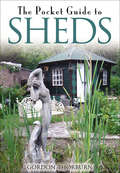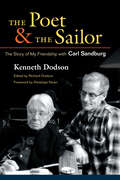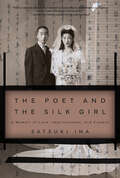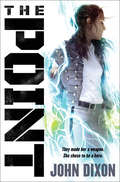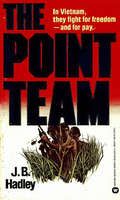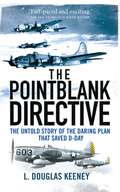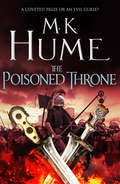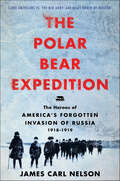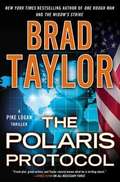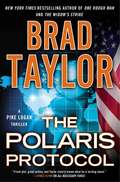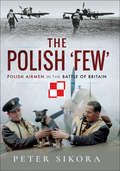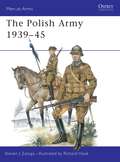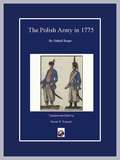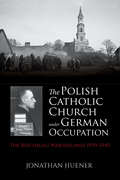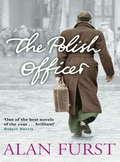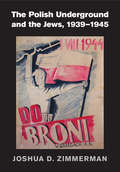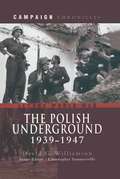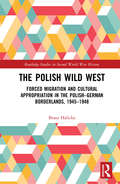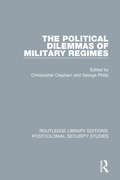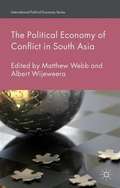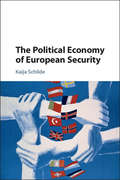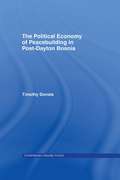- Table View
- List View
The Pocket Guide to Sheds
by Gordon ThorburnAs the globe warms, everything runs out and people become the willing slaves of small electronic machines, we have our response: the Golden Age of Sheds. We can look out from our sheds and see those unfortunates, the slaves in question, the ones who would rather be stripped naked and whipped through the market square than be separated, for one nanosecond, from their portable telephones and i-thingies, and we can smile.This book is where the smilers are. Here, you can find the man who reinvigorates the entente cordiale in wood, the woman who boils kettles, the woman who says 'I'm Nicola from In the Shed', the man who says 'What's yours?', the dooket that Jock built, the blockhouse that Noah built, a neoclassical stately home, and all manner of things musical, yogic, animalcular, roguish, ockerish and cloudy. Whether we see our shed as a place of work, a place of fun, a welcome refuge from normality, a shaded pool of tranquility, a realization of a secret yearning, a place to pot up the geraniums, or a little bit of all those things combined, we Sheddies, tribesfolk of the mighty Sheddici, hold one truth to be undeniable. We have our sheds, and the others haven't.
The Pocket Idiot's Guide to the ASVAB
by Laura Stradley Robin KavanaghYou know you cannot &“fail&” the Armed Services Vocational Aptitude Battery (ASVAB), but if you&’re planning a career in the military, you&’ll want to prepare before taking these mandatory exams.The Pocket Idiot&’s Guide® to the ASVAB will show you the lay of the land and help you plot a strategy, with explanations for every component of the text (and practice questions for each). You&’ll also receive expert guidance on how each branch of the military uses the scores to determine your future service.
The Poet and the Sailor: The Story of My Friendship with Carl Sandburg
by Kenneth DodsonTwo friends, a lifetime of letters, and an intimate look at a literary icon Carl Sandburg first encountered Kenneth Dodson through a letter written at sea during World War II. Though Dodson wrote the letter to his wife, Letha, Sandburg read it in tears and told her, "I've got to meet this man." Composed primarily of their correspondence that continued until Sandburg's death in 1967, The Poet and the Sailor is a chronicle of the deep friendship that followed. Ranging over anything they found important, from writing to health and humor, the letters are arranged by Richard Dodson and are accompanied by a foreword from Sandburg's noted biographer, Penelope Niven.
The Poet and the Silk Girl: A Memoir of Love, Imprisonment, and Protest
by Satsuki InaA compelling and prismatic love story of one family's defiance in the face of injustice—and how their story echoes across generations."It is both overwhelming and affirming to imagine, in the midst of their darkest hours, and in the middle of a country and a war that willfully misperceived them as enemy aliens, that the future, for Itaru and Shizuko Ina, was not only possible, but would deliver redemption in the form of the intimate, inexhaustible attention of a daughter." —Brandon Shimoda, author of The Grave on the WallIn 1942 newlyweds Itaru and Shizuko Ina were settling into married life when the United States government upended their world. They were forcibly removed from their home and incarcerated in wartime American concentration camps solely on account of their Japanese ancestry. When the Inas, under duress, renounced their American citizenship, the War Department branded them enemy aliens and scattered their family across the U.S. interior. Born to Itaru and Shizuko during their imprisonment, psychotherapist and activist Satsuki Ina weaves their story together in this moving mosaic. Through diary entries, photographs, clandestine letters, and heart-wrenching haiku, she reveals how this intrepid young couple navigated life, love, loss, and loyalty tests in the welter of World War II-era hysteria.The Poet and the Silk Girl illustrates through one family's saga the generational struggle of Japanese Americans who resisted racist oppression, fought for the restoration of their rights, and clung to their full humanity in the face of adversity. With psychological insight, Ina excavates the unmentionable, recovering a chronicle of resilience amidst one of the severest blows to American civil liberties. As she traces the legacies of trauma, she connects her family's ordeal to modern-day mass incarceration at the U.S.-Mexico border. Lyrical and gripping, this cautionary tale implores us to prevent the repetition of atrocity, pairing healing and protest with galvanizing power.
The Poetics of Military Occupation: Mzeina Allegories of Bedouin Identity Under Israeli and Egyptian Rule
by Smadar LavieThe romantic, nineteenth-century image of the Bedouin as fierce, independent nomads on camelback racing across an endless desert persists in the West. Yet since the era of Ottoman rule, the Mzeina Bedouin of the South Sinai desert have lived under foreign occupation. For the last forty years Bedouin land has been a political football, tossed back and forth between Israel and Egypt at least five times.
The Point
by John DixonWhat if you had a power you had to hide from everyone—until now? In this bold sci-fi action thriller, a secret training program at West Point is turning misfits into a new generation of heroes.Welcome to The Point, future leaders of the Posthuman Age. New Cadets, society is not ready for you. The oldest, fiercest fear is ignorance. The general population would burn you at the metaphorical stake. Here, you will train alongside other posthumans. You will learn to control and maximize your powers and to use them for the greater good. You will discover camaraderie and purpose. You will become a part of something bigger than yourselves: the Long Gray Line. Scarlett Winter has always been an outsider, and not only because she’s a hardcore daredevil and born troublemaker—she has been hiding superhuman powers she doesn’t yet understand. Now she’s been recruited by a secret West Point unit for cadets with extraordinary abilities. Scarlett and her fellow students are learning to hone their skills, from telekinetic combat to running recon missions through strangers’ dreamscapes. At The Point, Scarlett discovers that she may be the most powerful cadet of all. With the power to control pure energy, she’s a human nuclear bomb—and she’s not sure she can control her powers much longer. Even in this army of outsiders, Scarlett feels like a misfit all over again, but when a threat that endangers her fellow students arises from the school’s dark past, duty calls and Scarlett must make a choice between being herself and becoming something even greater: a hero.
The Point Team (The Point Team #1)
by J. B. HadleyA former Special Forces agent becomes a mercenary and returns to Vietnam after the end of the war.
The Pointblank Directive
by L. KeeneyWhere was the Luftwaffe on D-Day? Historians have debated that question for six decades, but in 2010 a formerly classified World War II D-Day history was restored, and in it were a new set of answers. Pointblank is the result of extensive new research using that newly restored history to create a richly textured portrait of air power and leadership, and perhaps the last untold story of D-Day: Three uniquely talented men and why, on the single most important day to the survival of the Third Reich, the German Air Force was unable to mount a single effective combat mission against the invasion forces.After a year of unremarkable bombing against Germany aircraft industry, and with just five months to go until D-Day, General Henry H. "Hap" Arnold, commander of the United States Army Air Forces placed his lifelong friend General Carl A. "Tooey" Spaatz in command of the strategic bombing forces in Europe and gave his protégé, General James "Jimmy" Doolittle command of the Eighth Air Force in England. For these fellow aviation pioneers and air war strategists, he had but one set of orders: Sweep the skies clean of the Luftwaffe by June 1944. Spaatz and Doolittle couldn't do that, but they could do what Arnold really wanted: Clear the skies sufficiently to gain air superiority over the D-Day beaches. The plan was called Pointblank. In Pointblank, L. Douglass Keeney carefully reconstructs the events in the air war that led up to D-Day while painting an in-depth portrait of the lives and times of these aviation pioneers.
The Poisoned Throne: A gripping adventure bringing the Arthurian Legend of life (Tintagel)
by M. K. HumeIs the throne of Britannia a coveted prize or an evil curse?Poisoned by greed and jealous, Constantinus' thirst for greatness will cost him dear... The Poisoned Throne, part two of the Tintagel trilogy is sure to appeal to fans of Paul Bannister and Game of Thrones.'It's a slice of history that's totally, utterly believable. Magnificent' - www.booksmonthly.co.ukA decade has passed since the death of Caradoc, King of the Dumnonii tribe, and his friend, Flavius Magnus Maximus. Britain is battered by Pict invaders, and centurion Constantinus and his legionnaires are fighting them to the death.Maximus's daughter, Lady Severa, holds the key to the throne of the High King of the Britons and when she is threatened with abduction, Constantinus escorts her to the safety of Tintagel. Agreeing to marry her, he is crowned the High King, and Severa bears him two sons, Ambrosius and Uther. But, as the ruler of Britain, Constantinus is poisoned by greed and jealousy, and his thirst for greatness in the Roman Empire will cost him dear...What readers are saying about The Poisoned Throne: 'A stunning story, well written and full of very interesting historical facts. Love it''Good character drawing, excellent battle scenes and plenty of intrigue''Left me wanting more! A very good read, very well written'
The Polar Bear Expedition: The Heroes of America's Forgotten Invasion of Russia, 1918–1919
by James Carl NelsonIn the brutally cold winter of 1919, 5,000 Americans battled the Red Army 600 miles north of Moscow. We have forgotten. Russia has not."AN EXCELLENT BOOK." —Wall Street Journal • "INCREDIBLE." — John U. Bacon • "EXCEPTIONAL.” — Patrick K. O’Donnell • "A MASTER OF NARRATIVE HISTORY." — Mitchell Yockelson • "GRIPPING." — Matthew J. Davenport • "FASCINATING, VIVID." — Minneapolis Star Tribune An unforgettable human drama deep with contemporary resonance, award-winning historian James Carl Nelson's The Polar Bear Expedition draws on an untapped trove of firsthand accounts to deliver a vivid, soldier's-eye view of an extraordinary lost chapter of American history—the Invasion of Russia one hundred years ago during the last days of the Great War.In the winter of 1919, 5,000 U.S. soldiers, nicknamed "The Polar Bears," found themselves hundreds of miles north of Moscow in desperate, bloody combat against the newly formed Soviet Union's Red Army. Temperatures plummeted to sixty below zero. Their guns and their flesh froze. The Bolsheviks, camouflaged in white, advanced in waves across the snow like ghosts.The Polar Bears, hailing largely from Michigan, heroically waged a courageous campaign in the brutal, frigid subarctic of northern Russia for almost a year. And yet they are all but unknown today. Indeed, during the Cold War, two U.S. presidents, Ronald Reagan and Richard Nixon, would assert that the American and the Russian people had never directly fought each other. They were spectacularly wrong, and so too is the nation's collective memory.It began in August 1918, during the last months of the First World War: the U.S. Army's 339th Infantry Regiment crossed the Arctic Circle; instead of the Western Front, these troops were sailing en route to Archangel, Russia, on the White Sea, to intervene in the Russian Civil War. The American Expeditionary Force, North Russia, had been sent to fight the Soviet Red Army and aid anti-Bolshevik forces in hopes of reopening the Eastern Front against Germany. And yet even after the Great War officially ended in November 1918, American troops continued to battle the Red Army and another, equally formiddable enemy, "General Winter," which had destroyed Napoleon's Grand Armee a century earlier and would do the same to Hitler's once invincible Wehrmacht.More than two hundred Polar Bears perished before their withdrawal in July 1919. But their story does not end there. Ten years after they left, a contingent of veterans returned to Russia to recover the remains of more than a hundred of their fallen brothers and lay them to rest in Michigan, where a monument honoring their service still stands.In the century since, America has forgotten the Polar Bears' harrowing campaign. Russia, notably, has not, and as Nelson reveals, the episode continues to color Russian attitudes toward the United States. At once epic and intimate, The Polar Bear Expedition masterfully recovers this remarkable tale at a time of new relevance.
The Polaris Protocol
by Brad TaylorRetired Delta Force commander Brad Taylor returns with the fifth propulsive thriller in his New York Times bestselling Pike Logan series. Taskforce operators Pike Logan and Jennifer Cahill are used to putting their lives at risk, but in The Polaris Protocol it is Jennifer's brother and countless more innocents who face unfathomable violence and bloodshed. Pike and Jennifer are in Turkmenistan with the Taskforce -- a top-secret antiterrorist unit that operates outside US law -- when Jennifer gets a call from her brother, Jack. Working on an investigative report into the Mexican drug cartels, Jack Cahill has unknowingly gotten caught between two rival groups. His desperate call to his sister is his last before he's kidnapped. In their efforts to rescue Jack, Pike and Jennifer uncover a plot much more insidious than illegal drug trafficking, the cartel that put a target on Jack's back has discovered a GPS hack with the power to effectively debilitate the United States. The hack allows a user to send false GPS signals, making it possible to manipulate everything from traffic signals and banking wire transfers to cruise missiles, but only while the system's loophole remains in place. With the GPS hack about to be exploited and Jack's life at stake, Jennifer and Pike must find a way to infiltrate the cartel's inner circle and eliminate the impending threat. The price of failure, for both the Taskforce and the country, is higher than ever.
The Polaris Protocol (Pike Logan Series #5)
by Brad TaylorTaskforce operators Pike Logan and Jennifer Cahill are used to putting their lives at risk, but in The Polaris Protocol it's Jennifer's brother and countless more innocents who face unfathomable violence and bloodshed. Pike and Jennifer are in Turkmenistan with the Taskforce--a top secret antiterrorist unit that operates outside US law--when Jennifer gets a call from her brother, Jack. Working on an investigative report into the Mexican drug cartels, Jack Cahill has unknowingly gotten caught between two rival groups. His desperate call to his sister is his last before he's kidnapped. In their efforts to rescue Jack, Pike and Jennifer uncover a plot much more insidious than illegal drug trafficking--the cartel that put a target on Jack's back has discovered a GPS hack with the power to effectively debilitate the United States. With the GPS hack about to be exploited and Jack's life at stake, Jennifer and Pike must find a way to infiltrate the cartel's inner circle and eliminate the impending threat. The price of failure, for both the Taskforce and the country, is higher than ever.
The Polish 'Few': Polish Airmen in the Battle of Britain
by Peter SikoraThey came to fight for freedom and their country, they came to fight Germans. Men of the Polish Air Force, who had escaped first to France and then to Britain, to fly alongside the Royal Air Force just as Fighter Command faced its greatest challenge the Battle of Britain.Many of the Polish airmen joined existing RAF squadrons. The Poles also formed their own squadrons, but only four became operational during the Battle of Britain: Nos. 300 and 301, were bomber squadrons, with another two, Nos. 302 and 303, being fighter squadrons. Flying Hawker Hurricanes, both 302 and 303 squadrons were active by the middle of August 1940, just when they were most needed, at the height of the Battle of Britain, with Fighter Command stretched to its limit.The Polish squadrons, battle-hardened from their encounters with the Luftwaffe during the invasion of Poland and Battle of France, soon made their mark. In particular, 303 Squadron become the highest-scoring unit of Fighter Command.In total, 145 Polish pilots, the largest non-British contingent in Fighter Command at the time, fought in the Battle of Britain. While Winston Churchill praised the contribution of the Few, the pilots of many nationalities who had defended Britain, Air Chief Marshal Sir Hugh Dowding was more specific: Had it not been for the magnificent material contributed by the Polish squadrons and their unsurpassed gallantry, I hesitate to say that the outcome of the Battle would have been the same.
The Polish Army 1939-45
by Steven Zaloga Richard HookPoland was the first of the Allied nations to succumb to German aggression in the Second World War, but by the most tortuous of routes her army managed to remain in the field through all five years of bloody fighting. Polish soldiers fought in nearly every major campaign in the European theatre, and their tale is a complicated and tragic one. This richly detailed text by Steven Zaloga relates the story of the Polish Army during the Second World War, from the first wave of Stukas in 1939 to its eventual conclusion.
The Polish Army in 1775
by Vincent Rospond Gabriel Nichols RaspeGabriel Raspe's portraits of the Polish Army in 1775 is one of the earliest and complete representations of the Polish Army in the eighteenth century. For almost two hundred years this complete work has not been readily available, but Winged Hussar has edited this translation of the publication making it available to students and enthusiasts
The Polish Catholic Church under German Occupation: The Reichsgau Wartheland, 1939-1945
by Jonathan HuenerWhen Nazi Germany invaded Poland in 1939, it aimed to destroy Polish national consciousness. As a symbol of Polish national identity and the religious faith of approximately two-thirds of Poland's population, the Roman Catholic Church was an obvious target of the Nazi regime's policies of ethnic, racial, and cultural Germanization. Jonathan Huener reveals in The Polish Catholic Church under German Occupation that the persecution of the church was most severe in the Reichsgau Wartheland, a region of Poland annexed to Nazi Germany. Here Catholics witnessed the execution of priests, the incarceration of hundreds of clergymen and nuns in prisons and concentration camps, the closure of churches, the destruction and confiscation of church property, and countless restrictions on public expression of the Catholic faith. Huener also illustrates how some among the Nazi elite viewed this area as a testing ground for anti-church policies to be launched in the Reich after the successful completion of the war. Based on largely untapped sources from state and church archives, punctuated by vivid archival photographs, and marked by nuance and balance, The Polish Catholic Church under German Occupation exposes both the brutalities and the limitations of Nazi church policy. The first English-language investigation of German policy toward the Catholic Church in occupied Poland, this compelling story also offers insight into the varied ways in which Catholics—from Pope Pius XII, to members of the Polish episcopate, to the Polish laity at the parish level—responded to the Nazi regime's repressive measures.
The Polish Officer
by Alan FurstFrom the master of the historical spy thriller, a story set in the heart of the Polish resistanceSeptember, 1939. The invading Germans blaze a trail of destruction across Poland. France and Britain declare war, but do nothing to help. And a Polish resistance movement takes shape under the shadow of occupation, enlisting those willing to risk death in the struggle for their nation's survival. Among them is Captain Alexander de Milja, an officer in the Polish military intelligence service, a cartographer who now must learn a dangerous new role: spymaster in the anti-Nazi underground. Beginning with a daring operation to smuggle the Polish National Gold Reserve to the government in exile, he slips into the shadowy and treacherous front lines of espionage; he moves through Europe, changing identities and staying one step ahead of capture. In Warsaw, he engineers a subversive campaign to strengthen the people's will to resist. In Paris, he poses as a Russian poet, then as a Slovakian coal merchant, drinking champagne in black-market bistros with Nazis while uncovering information about German battle plans. And a love affair with a woman of the French Resistance leads him to make the greatest decision of his life.
The Polish Underground and the Jews, 1939–1945
by Joshua D. ZimmermanThe Polish Underground and the Jews, 1939–1945 examines one of the central problems in the history of Polish-Jewish relations: the attitude and the behavior of the Polish Underground - the resistance organization loyal to the Polish government-in-exile - toward the Jews during World War II. Using a variety of archival documents, testimonies, and memoirs, Zimmerman offers a careful, dispassionate narrative, arguing that the reaction of the Polish Underground to the catastrophe that befell European Jewry was immensely varied, ranging from aggressive aid to acts of murder. By analyzing the military, civilian, and political wings of the Polish Underground and offering portraits of the organization's main leaders, this book is the first full-length scholarly monograph in any language to provide a thorough examination of the Polish Underground's attitude and behavior towards the Jews during the entire period of World War II.
The Polish Underground, 1939–1947 (Campaign Chronicles)
by David G. WilliamsonThis study of the Polish resistance movement chronicles the operations of various factions from WWII through the postwar battle for power. The Polish partisan army famously fought with tenacity against the Wehrmacht during World War II. Yet the wider story of the Polish underground movement, which opposed both the Nazi and Soviet occupying powers, has rarely been told. In this concise and authoritative study, historian David Williamson presents a major reassessment of the actions, impact and legacy of Polish resistance. The Polish resistance movement sprang up after the German invasion of 1939. As the war progressed, it took many forms, including propaganda, spying, assassination, disruption, sabotage and guerrilla warfare. Many groups were involved, including isolated partisan bands, the Jewish resistance, and the Home Army which confronted the Germans in the disastrous Warsaw Uprising of 1944. Going beyond the Second World War, Williamson's graphic account chronicles the clandestine civil war between the Communists and former members of the Home Army that continued until the Communist regime took power in 1947.
The Polish Wild West: Forced Migration and Cultural Appropriation in the Polish-German Borderlands, 1945-1948 (Routledge Studies in Second World War History)
by Beata HalickaThe incorporation of German territories east of the Oder and Western Neisse rivers into Poland in 1945 was linked with the difficult process of an almost total exchange of population and involved the taking over of a region in which the Second World War had effected an enormous level of destruction. The contemporary term ‘Polish Wild West’ not only alluded to the reigning atmosphere of chaos and ‘survival of the fittest’ in the Polish–German borderland but was also associated with a new kind of freedom and the opportunity to start everything anew. The arrival in this region of Polish settlers from different parts of Poland led to Poles, Germans and Soviet soldiers temporarily coming into contact with one another. Living together in this war-damaged space was far from easy. On the basis of ego-documents, the author recreates the beginnings of the shaping of this new society, one affected by a repressive political system, internal conflicts and human tragedy. In distancing oneself from the until-recently dominant narratives concerning expellees in Germany or pioneers of the ‘Recovered Territories’ in Poland, Beata Halicka tells the story of the disintegration of a previous cultural landscape and the establishment of one which was new, in a colourful and vivid manner and encompassing different points of view.
The Political Dilemmas of Military Regimes
by Christopher Clapham and George PhilipFirst published in 1985, The Political Dilemmas of Military Regimes was written against the backdrop of the increased prominence of military intervention in the political process during this century. The book puts forward the argument that the basic problem for military regimes is not how they gain power, but what they can do with it once they have it. It discusses the enormous range of cultural and historical circumstances that military organisations are derived from, and how widely they vary in their structure, politics, and social composition. The book also highlights the dilemma of choosing between institutionalisation and demilitarisation as one that all military regimes must eventually face. The Political Dilemmas of Military Regimes is an in-depth study that draws on global material and experiences from throughout the century.
The Political Economy of China's Economic Zones
by George T. CraneIn 1979 China launched a new international economic policy with the establishment of four Special Economic Zones (SEZs): Shenzhen, Zhuhai, and Shantou in Guangdong Province and Xiamen in Fujian Province. Modelled loosely on export processing zones and free trade zones found in other less developed countries, the SEZs offer a variety of financial inducements to foreign investors in order to harness international business for national economic advantage. Designed to be a cornerstone of China's economic reforms, by 1985 the SEZs (in the mid-80s zone-like policies were extended to fourteen coastal cities) were scandal-ridden and fraught with serious problems. This work, the first book-length analysis in English of China's SEZs, examines the problems and promise of this innovative approach to "structural economic reform" and the comparative significance of the SEZs.
The Political Economy of Conflict in South Asia
by Matthew J. Webb Albert WijeweeraDestructive conflicts have thwarted growth and development in South Asia for more than half a century. This collection of multi-disciplinary essays examines the economic causes and consequences of military conflict in South Asia from a variety of perspectives embracing fiscal, social, strategic, environmental and several other dimensions.
The Political Economy of European Security
by Kaija SchildeWhat is the relationship between private actors and international institutions in global governance, as institutions such as the EU develop aspects of political authority once in the sole domain of nation states? Important areas of recent EU development have been immigration, security, and defense policies. Are these EU policies the result of strategic imperatives, or are they also driven by the political economy of markets? Kaija Schilde argues that answers require evaluating the EU in the comparative tradition of the political development of authority. Drawing on industry documents, interviews, interest group data, an original survey, and comparative political theory, The Political Economy of European Security demonstrates that interest groups can change the outcomes of developing political institutions because they provide sources of external capacity, which in turn can produce authority over time. In this way, the EU is like a developing state in its relationship with interest groups.
The Political Economy of Peacebuilding in Post-Dayton Bosnia (Contemporary Security Studies)
by Timothy DonaisA fresh examination of the political economy of the peacebuilding process in Bosnia-Herzegovina in the aftermath of the country's 1992-95 war. Little progress has been made in transforming the country's war-shattered economy into a functioning market economy, this new study explains the principal dynamics that have led to this, and places Bosnia's economic transition process within the context of the country's broader post-conflict peacebuilding process. The central argument this book persuasively advances is that much of Bosnia's ongoing economic crisis, and its current reform stalemate, can be explained by exploring the interactions of an inappropriate international model of economic reform with the country's particular post-conflict and post-socialist political economy. This book is essential for readers who wish to build an understanding of the region and assess its future prospects and hopes.
